Workshop Series kicks off with a Reef Ramble at Cape Douglas – and some mysterious finds
Over the course of 2021, we’ll be running a series of workshops at NGT’s Hutt Bay Wetland Reserve and surrounds, thanks to support from SA’s Coast Protection Board. The series kicked off recently with a beach clean up and reef ramble at Cape Douglas. Nine volunteers joined us for this event, including some new faces and some old faithfuls. We were pleased not to find a great deal of rubbish on the foreshore, and nevertheless had plenty of discussion on some of the washed up finds. One of our regular volunteers, Helen, had her eyes in and found an empty shark egg camouflaged amongst the kelp and other beach wrack.
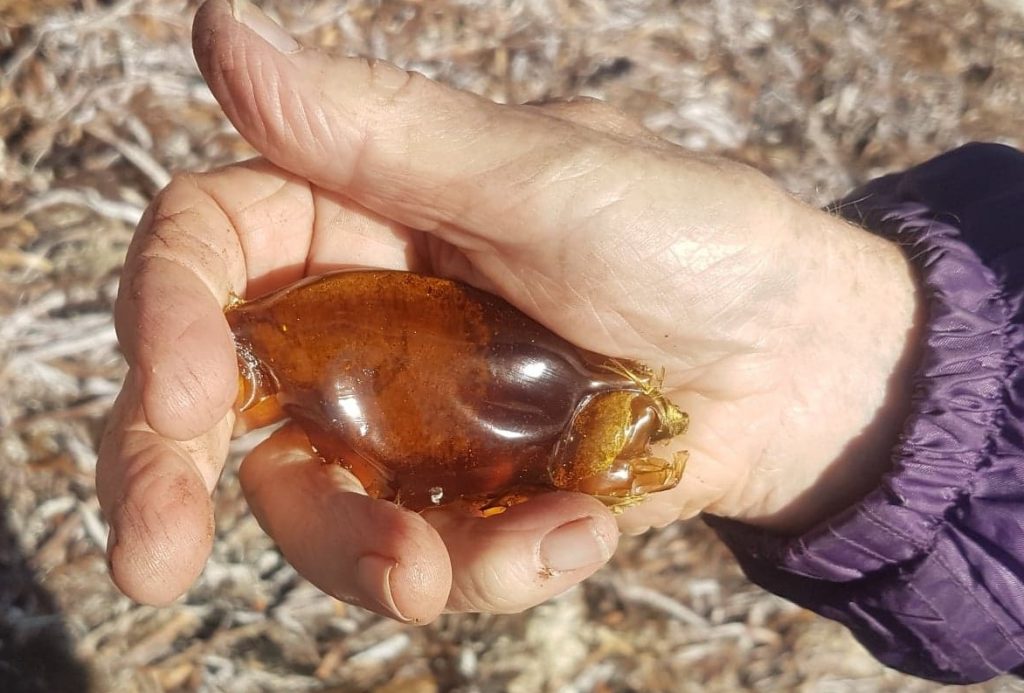
After our stroll down the beach and back, we stowed the rubbish collected in the vehicle, and headed out onto the reef.
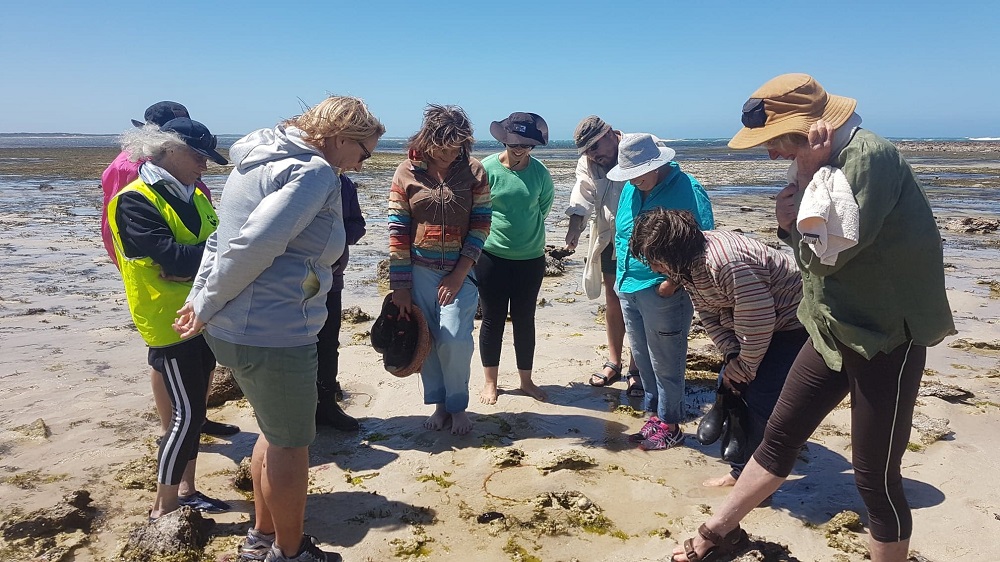
Our wander around the reef found two different species of sea hares, the smaller Aplysia purvula and the larger what we have until now believed to be Aplysia juliana. One of our volunteers stepped very close to a large sea hare – they’re good at camouflage! – giving it a fright and causing it to shoot bright purple ink into the surrounding rockpool! Unfortunately this unfolded too rapidly to catch on camera, but we are now left wondering what this species is, as A. juliana is known to excrete not a purple, but a milky substance. Sea hares can be quite tricky to identify as their appearance can vary greatly depending on their environment.
If you’re anywhere in Victoria, you can head out to the coast next weekend and submit photos of any sea slugs (a generic term encompassing sea hares, other nudibranchs, and other animals) to the Sea Slug Census to have them professionally identified and contribute to citizen science.
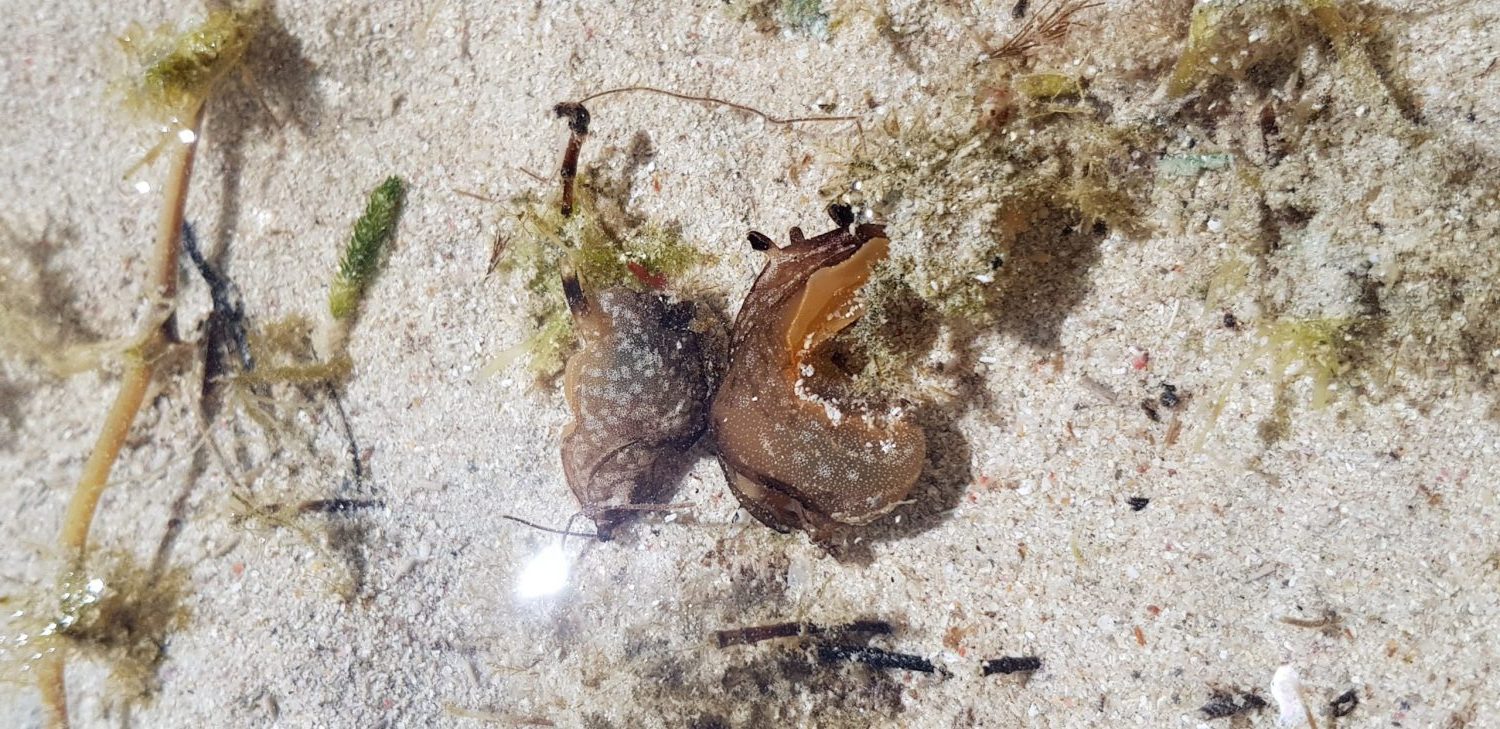
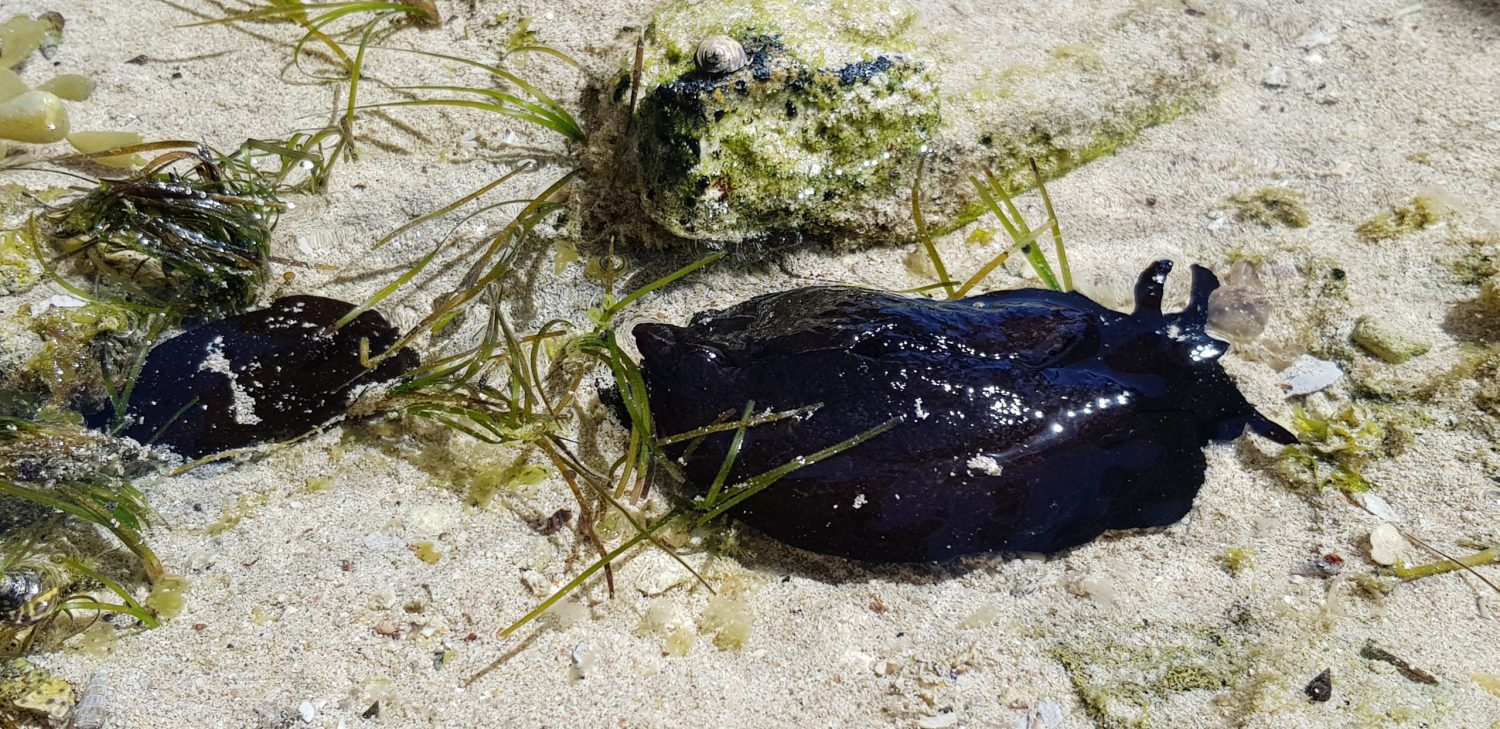
We found lots of of moon snail egg rings (also known as sand collars) from the species Notocochlis sagittata. Moon snails are carnivorous and prey upon bi-valves like cockles (or pipis) in the sand. If you’ve ever found a cockle shell on the beach with a perfectly drilled hole, you know it was eaten by a moon snail!
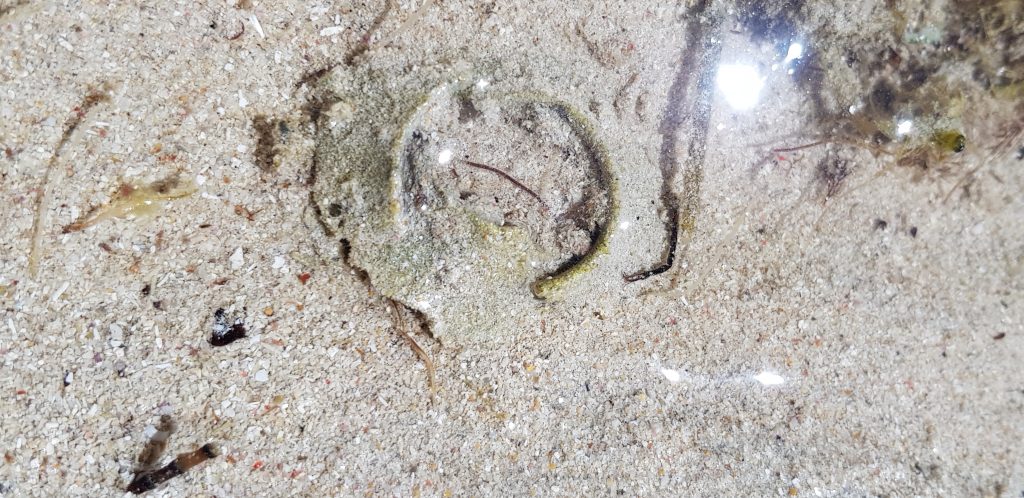
Snail eggs take many forms and we reckon the photos below are also eggs, either from a snail or perhaps a worm?
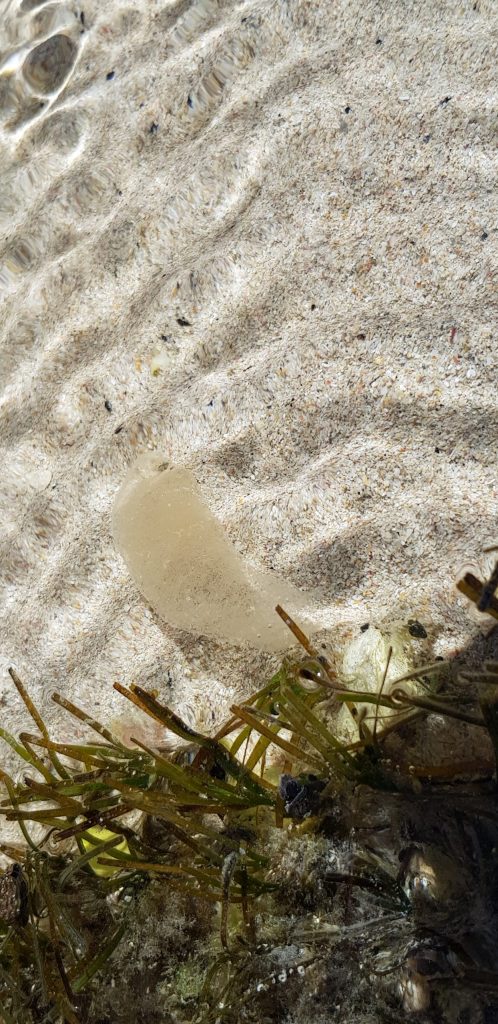
Unknown egg case (photo: Jess Bourchier) 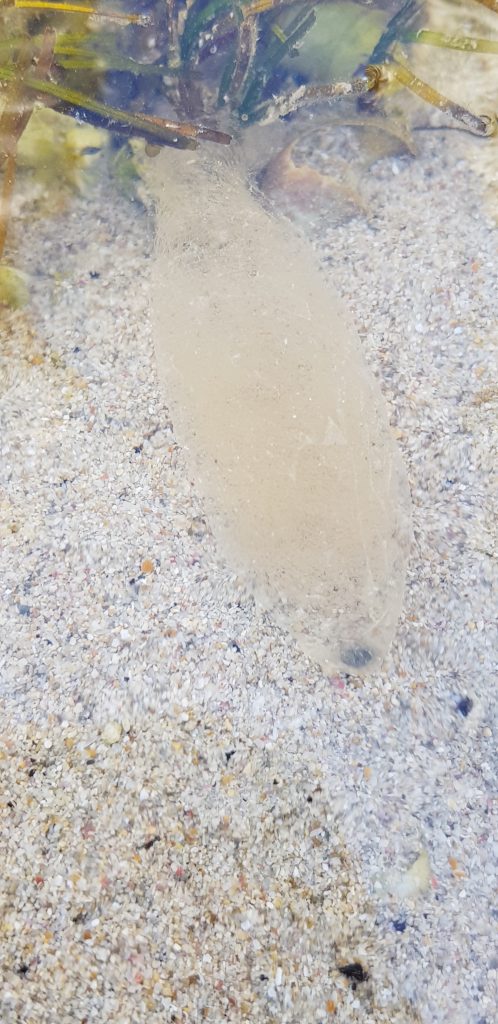
Unknown egg case – Photo: Jess Bourchier
Anemones are common along our coast but a couple in particular caught our attention on this day. The first had a strange blob attached, which then dislodged and burst; it looked like a bunch of small pieces of algae when dispersed (see photos below).
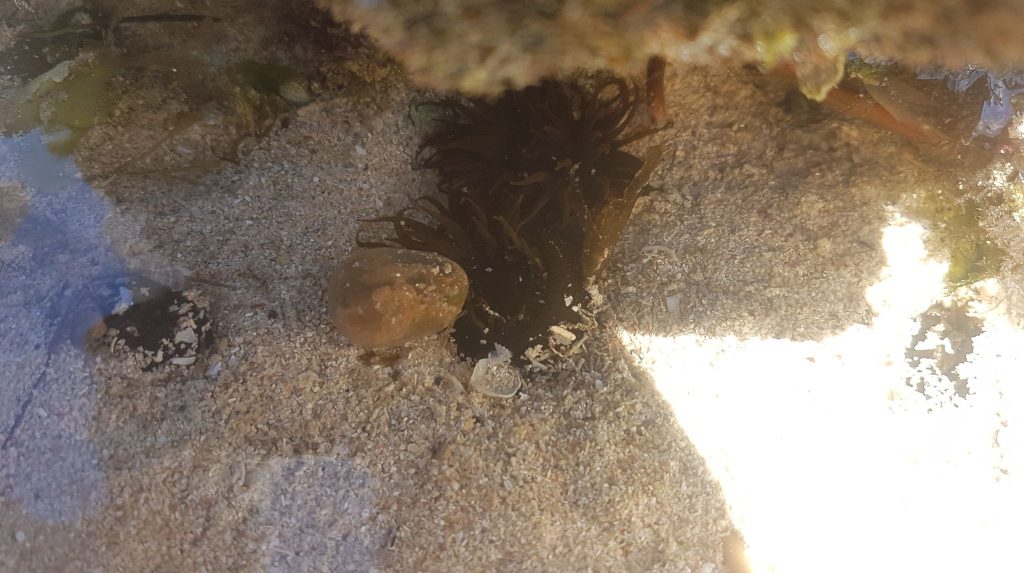
Sea anemone with blob (photo: Rose Thompson) 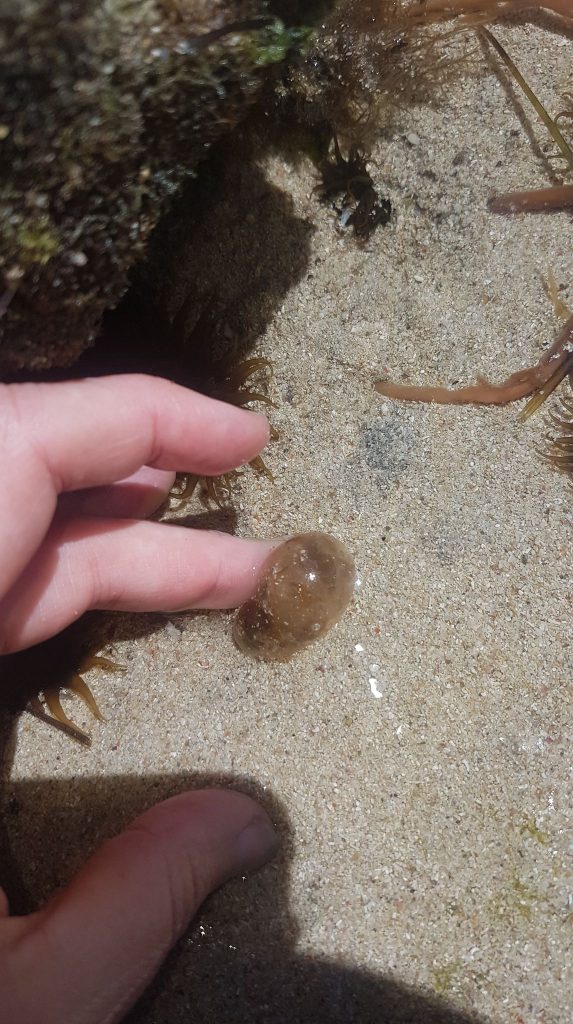
Jelly-like blob detached from anemone (photo: Rose Thompson) 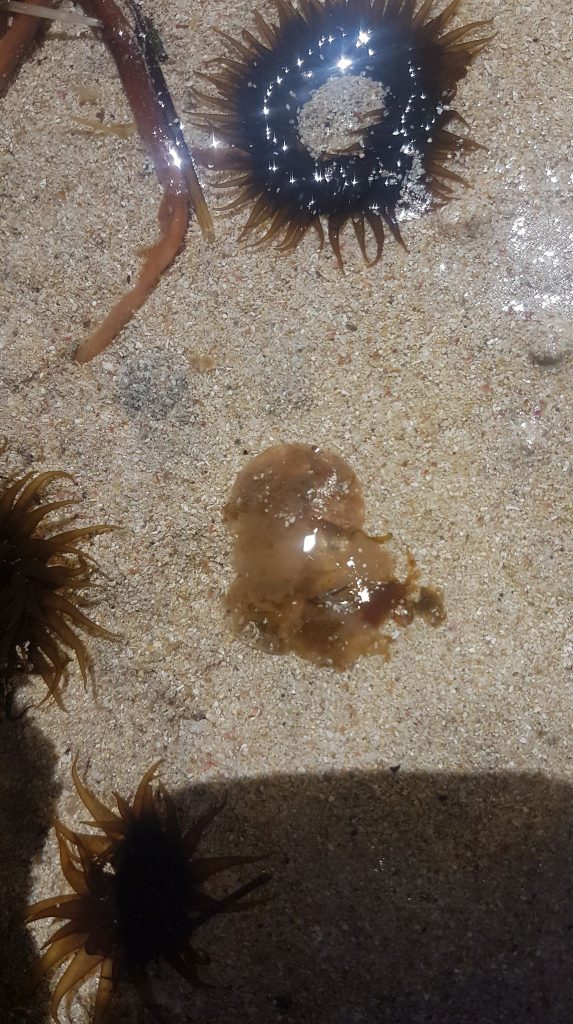
Contents of sea anemone blob (photo: Rose Thompson)
A second anemone nearby had a stick-like appendage protruding from its mouth, that was soft on the outside but harder in the middle. Both of these finds, as well as the egg sack and sea hare above, have us stumped, so if anyone knows what they might be, we’d would love to hear from you! Please drop Jess an email.
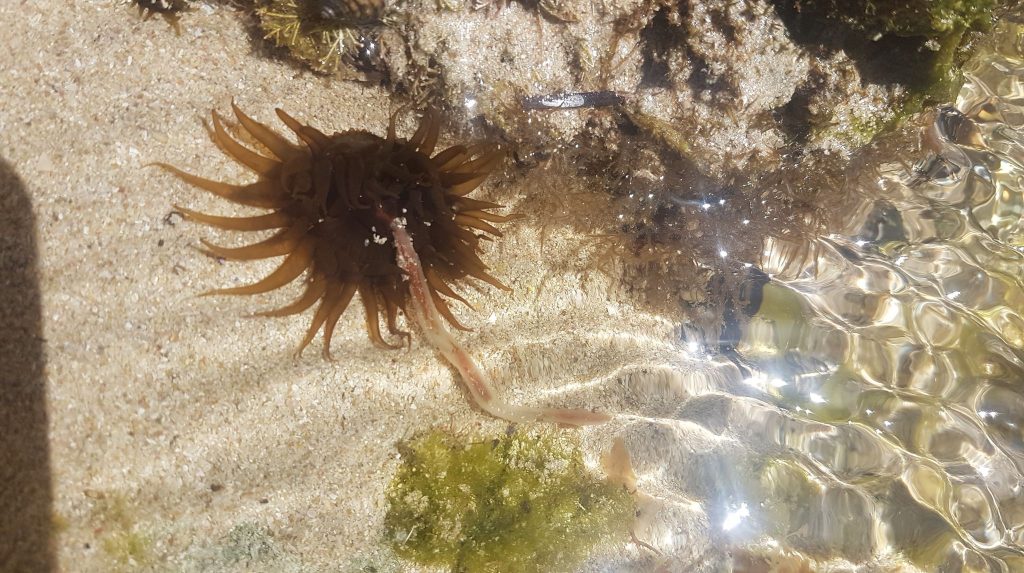
Watch out for future workshops and working bees on our Facebook, Instagram, or get in touch to be kept in the loop.
The Hutt Bay Wetland Reserve workshop and working bees project is supported by the Coast Protection Board through the Coastal Community Participation Grant.

